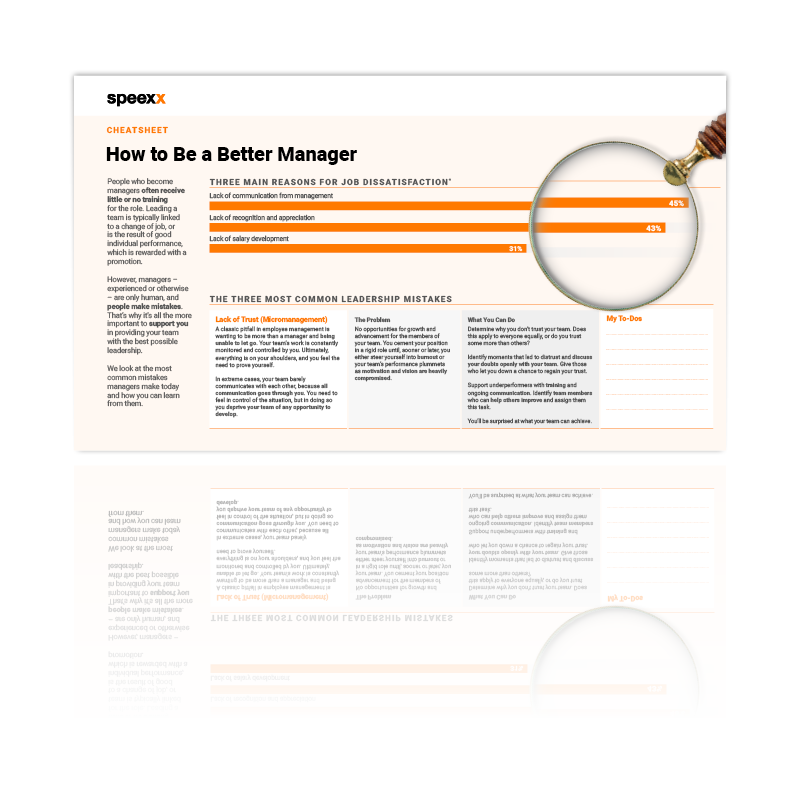Is there a real choice between people and results? While this may seem complex, the answer is clear: without people, there are no results. Effective performance management works hand in hand with a robust performance culture. Together, they create a synergy that drives success. While most companies implement employee performance management systems, few succeed in fostering a genuine performance culture that empowers employees to reach their potential, ultimately fueling business performance.

In this article, discover what performance management and performance culture are—and why prioritizing people is key to achieving sustainable results. We’ll also look at recent data highlighting the benefits of nurturing a culture centered around high performance and personal growth.
What Are Performance Management and Performance Culture?
Performance management is an ongoing process of structured communication between managers and employees that focuses on achieving strategic objectives. This process connects with other essential organizational systems, including strategic planning, team development, compensation, succession planning, and HR technology. Despite the various supporting elements, people are, and always will be, the backbone of effective performance management.
Performance culture centers on shared goals—specifically, employees’ desire to excel in their roles and grow within the company. Building a performance culture involves cultivating talent and motivating individuals through a common mission: enhancing the organization’s overall performance. For employees to feel connected to this goal, management must provide clear objectives and ensure alignment with team and individual goals.
Forbes highlights that growth mindset ultimately drives profits, as it fosters an environment where employees continuously strive for improvement and maximize their potential, given their resources and circumstances. A strong performance culture allows employees to take ownership of their roles and to actively seek ways to contribute to the company’s success.

Read our white paper to find out how you can use business coaching to get the best out of your team and pave the way for success.
Why Is Performance Management Important?
In today’s fast-paced business environment, performance management is essential to organizational resilience and adaptability. HR teams must stay informed of evolving trends, workplace dynamics, and best practices to keep pace. Without adapting to new developments, companies risk losing motivation and engagement among their workforce, leading to lower performance, reduced morale, and potential turnover.
The good news? More organizations are beginning to recognize the value of performance management as a key driver of employee engagement and retention. A 2024 survey by Deloitte found that organizations with effective performance management systems are 20% more likely to see higher employee satisfaction rates and are 30% more likely to meet or exceed their business goals.
10 Key Performance Management Processes
Modern performance management processes help leaders monitor, evaluate, and enhance team performance, ensuring alignment with organizational objectives. Key practices include:
- Continuous Feedback: Regular feedback ensures employees know where they stand and can make adjustments promptly.
- Structured Performance Reviews and Rewards: Clear rewards and recognition boost motivation and clarify expectations.
- Employee Recognition: Acknowledging individual contributions fosters a sense of belonging.
- Goal Setting and Alignment: Specific, measurable goals give employees a clear path forward.
- Fostering Continuous Improvement: Encouraging learning and growth motivates employees to reach their potential.
- Providing Mentoring Programs: Access to mentors aids skill development and career advancement.
- Encouraging Employee Involvement: Employee participation in decision-making boosts commitment and engagement – particularly among Gen Z employees.
- Implementing 360° Feedback Mechanisms: Well-rounded feedback provides a comprehensive view of performance.
- Tracking KPIs and Metrics: Data-driven insights help organizations measure progress and identify improvement areas.
- Creating Personal Development Plans: Personalized plans align employee aspirations with company goals.
These practices support a strategic approach that enhances both employee engagement and organizational growth, making performance management a vital component of HR strategy.

Laying the Foundation of a Performance Culture: Setting Goals
The relationship between personal values and job performance is critical to cultivating a strong performance culture. Employees lose motivation when performance management is emphasized without embedding a culture that connects their roles to the organization’s broader mission. Employee commitment and a sense of meaningful contribution are essential for successful organizational transformations, as McKinsey research shows that people who find purpose in their work are four times more engaged and motivated to achieve common goals.
A 2024 McKinsey article reported that organizations emphasizing employee “will” to transform are more successful in achieving lasting, positive change. Furthermore, Gallup research supports this, showing that even a 10% improvement in employees’ connection to their organization’s purpose can reduce turnover by 8.1% and increase profitability by 4.4%.
Linking personal values with job performance enhances individual engagement and helps align employees with the company’s goals. This connection fosters a sense of belonging and recognition, making employees feel valued and part of something larger than themselves. Ultimately, nothing motivates employees more than knowing their contributions are significant and integral to a shared mission. This sense of purpose, combined with a feeling of competence, fuels a performance culture, driving both individual satisfaction and organizational success.
How to Create a Performance Culture
Creating a high-performance culture doesn’t happen overnight. It requires careful planning, commitment from leadership, and a supportive environment that enables employees to grow and succeed. Here are three key steps to start building a performance culture:
- Define Success Metrics: Decide on clear indicators to measure the success of your performance culture initiatives. This may include metrics like employee engagement scores, retention rates, or productivity measures.
- Assess and Set Goals: Utilize surveys, focus groups, and feedback tools to evaluate the current culture and set realistic, meaningful goals. Align these goals with both employee and organizational objectives to ensure everyone is moving toward the same vision.
- Empower Employees: Equip employees with resources to foster strong relationships, both with peers and managers. Training programs, team-building activities, and open communication channels can create a supportive environment where employees feel connected and valued.
While performance management often emphasizes data and metrics, true performance culture focuses on cultivating a growth-oriented environment. It’s more than a checklist exercise; it’s about embedding a mindset where individuals are motivated to achieve their potential and contribute to a shared purpose. Performance management and performance culture, when aligned, bridge individual aspirations with organizational goals, creating a powerful foundation for sustainable success.
Speexx is a people development platform that supports organizations in cultivating this culture by offering employees programs such as language training and business coaching. Click here to learn more or ask for a demo.

This cheatsheet equips you with practical strategies for navigating difficult workplace conversations, helping you approach them with confidence and achieve positive outcomes for all parties involved.
